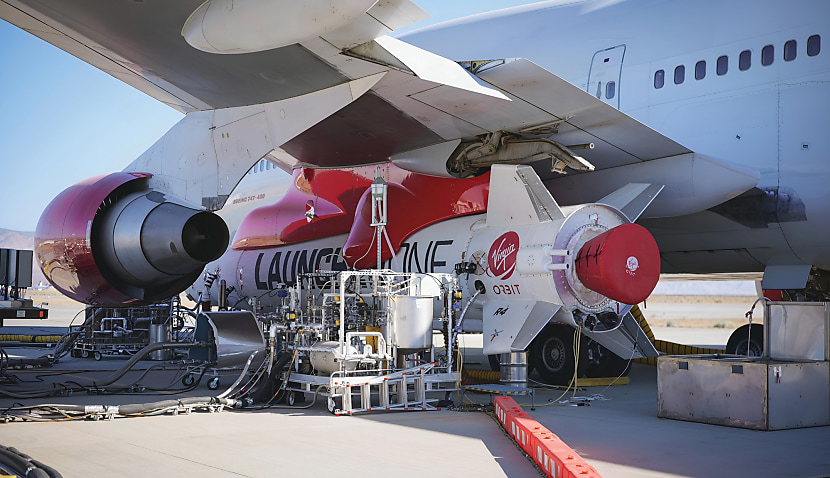
According to the British version of Sky News, the business is still “aiming” to secure additional capital this week, though prior investor Boeing is understood not to be involved in rescue talks.
The news comes after the 747 rocket launch business paused its operation and reportedly stood down staff last week as it struggled to deal with the fallout from its bodged launch in the UK earlier this year.
Virgin Orbit is the successor to a project begun by Virgin Galactic and uses a modified Boeing 747-400 aircraft to launch payloads into space from mid-air. It had targeted launches from Toowoomba in Queensland within three years.
However, on Thursday, Bloomberg reported nearly all Virgin Orbit staff were furloughed for the week in an attempt to buy time to finalise a new investment plan.
“Virgin Orbit is initiating a company-wide operational pause, effective March 16, 2023, and anticipates providing an update on go-forward operations in the coming weeks,” a spokesperson confirmed.
It follows the high-profile failure of its launch in Cornwall, in the south-west of England, thought to have been caused by a fuel filter that dislodged mid-launch.
January’s launch was the first outside the company’s home airport in the Mojave Desert, California, and received significant backing from the British government.
It resulted in the loss of all of the payloads that were bound for orbit, including a UK Ministry of Defence satellite and a US Naval Research Laboratory payload.
The UK government announced in mid-January that the UK’s Space Accident Investigation Authority and the FAA would jointly lead the investigation.
The 747 rocket launch idea works because the legendary Boeing aircraft has a little-known capacity to attach a fifth engine, enabling it to carry a rocket.
After the satellites are fitted underneath the rocket’s nose — or fairing — the projectile is attached underneath the left wing of the Jumbo Jet.
The aircraft takes off and cruises upwards to its launch position at around 35,000 feet.
“The pilot then pulls up on the 747 to a 30-degree angle because we want the rocket facing the right direction, and we want a bit of upward pitch,” Virgin Orbit chief executive officer Dan Hart told Space Connect’s sister brand, Australian Aviation, in an exclusive interview last year.
“The other pilot, at the right moment, pushes a button on the panel of the cockpit to release the rocket, which drops — or glides — for about four or five seconds until it’s safely able to start its engines.”
Seconds afterwards, the 747 banks right to stay clear of the rocket’s path.

Adam Thorn
Adam is a journalist who has worked for more than 40 prestigious media brands in the UK and Australia. Since 2005, his varied career has included stints as a reporter, copy editor, feature writer and editor for publications as diverse as Fleet Street newspaper The Sunday Times, fashion bible Jones, media and marketing website Mumbrella as well as lifestyle magazines such as GQ, Woman’s Weekly, Men’s Health and Loaded. He joined Momentum Media in early 2020 and currently writes for Australian Aviation and World of Aviation.
Receive the latest developments and updates on Australia’s space industry direct to your inbox. Subscribe today to Space Connect here.









